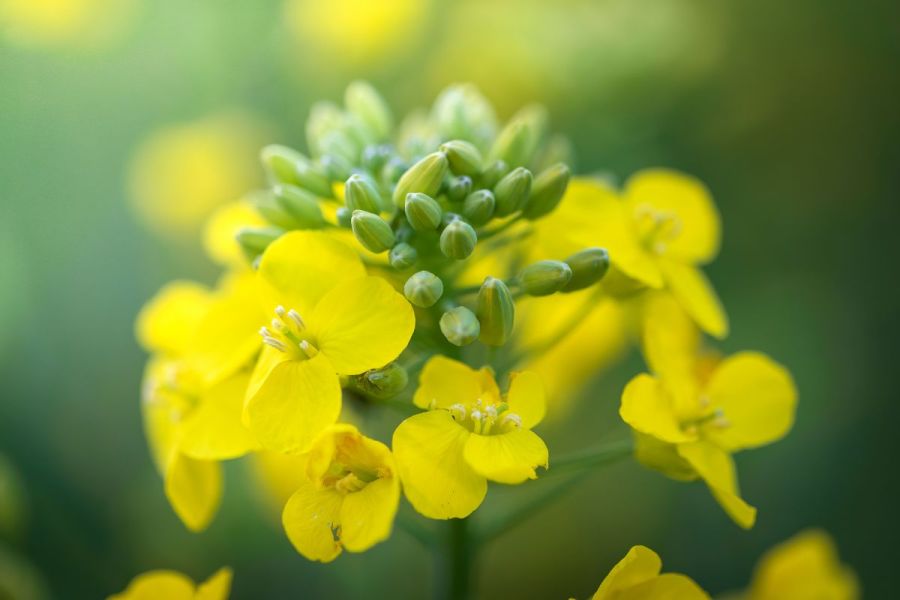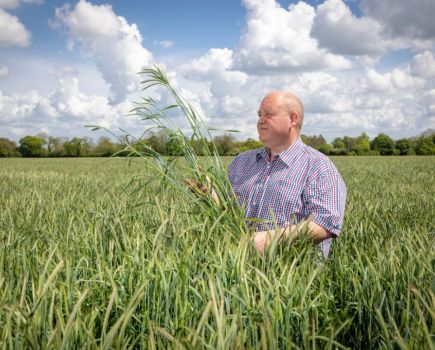United Oilseeds’ James Warner highlights that plantings for the current season appear to be -36%, year-on-year.
By James Warner
According to United Oilseeds’ managing director, James Warner, although it’s difficult to paint an optimistic picture for the future of oilseed rape at the moment, there are positives to highlight.
Reflecting on Harvest 2024, James points out that although there’s been a significant drop-off in yield across the UK – averages are now down to 2.91t/ha – East Anglia fared better. “Yields in that part of the country were +20% on 2023, despite the rest of the UK really suffering.
“If you recall, East Anglia was severely hit by cabbage stem flea beetle pressure a few years ago, so it could be down to a cycle of control or some form of migration trend,” he explains.
He adds that initially, data from the firm indicated 2023/24 UK plantings would total around 350,000ha, but following prolonged, difficult weather conditions, the final harvested area was in fact 291,948ha. “With an average yield of 2.91t/ha, that’s a total 833,873t national output – the lowest since 1984.
“Despite this, oil yields were up – the second highest that we’ve recorded – which is a positive for growers given the £6/t additional margin available through bonuses,” he adds.
As for the current season, James acknowledges it’s been tough so far. “We all expected plantings to be down but I’m unsure we expected it to be by this much – based on seed sales, we’re looking at -36% year-on-year.
“Inspecting more closely, 55% of sales have been for hybrid varieties with just 13% for conventional options (see table). This demonstrates that the swing towards hybrids is continuing – if you go back just five years, conventionals had 50% of the market.
“Furthermore, the biggest shift has been in specialist varieties – HOLL (high oleic, low linolenic) are +17% whereas HEAR (high erucic acid rape) have had less of a downturn than they could have had at -11%, year-on-year.
“The combination of HOLL and HEAR varieties now comprise around 22% of the market, whereas last year it was 16% and five years ago, just 8%.”
| Varietal type | 2023/24 (ha) | 2024/25 (ha) | % change* |
| Conventional | 46,129 | 26,093 | -43% |
| Hybrid | 199,593 | 122,358 | -39% |
| HOLL | 6000 | 7000 | +17% |
| HEAR | 41,892 | 37,095 | -11% |
| Clubroot | 21,729 | 13,874 | -36% |
| Clearfield | 20,118 | 7206 | -64% |
| TOTAL | 335,461 | 213,626 | -36% |
*Data based on United Oilseeds seed sales
Despite the negative headline numbers, James comments that as of today, growers are reporting some of the best OSR establishment seen for years. “In 2023, based on our establishment scheme data, we saw around 10% crop losses. That’s in contrast with 4% this year which would also suggest establishment has fared much better this season.”
This could be timely news for the firm, given its recently launched OSR Reboot campaign. Led by United Oilseeds with wide industry support, its aim is to reinvigorate optimism and drive action within the sector.
“Already there are noticeable developments as a result of the OSR Reboot including policy requests to amend the SFI framework to include payment for pollen/nectar flowering crops, and to encourage changes to the Border Target Operations Model (BTOM) to expedite seed movement into the UK,” says James.
Neil Groom, general manager for Grainseed, agrees that SFI has had a negative impact on the prospects for OSR. “In effect, SFI has become the break crop for wheat on some farms. But care is required to prevent build-up of weeds and pests which will result in more input costs in the rotation.”
He also comments that due to wet weather at harvest, it meant seedbed conditions were favourable for OSR. “Establishment was rapid this autumn and fields look very good going into the winter.”
This article was taken from the latest issue of CPM. Read the article in full here.
For more articles like this, subscribe here.
Sign up for Crop Production Magazine’s FREE e-newsletter here.




